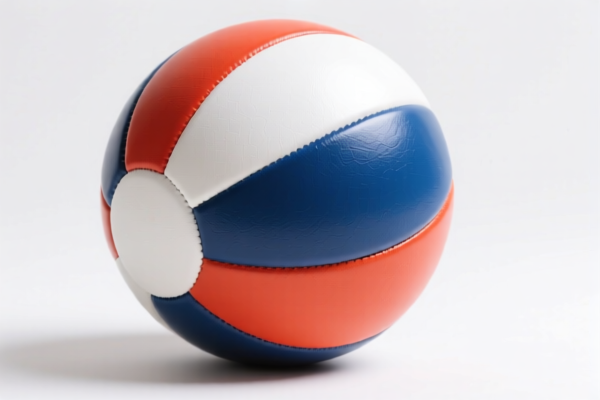| HS Code | Official Doc | Tariff Rate | Origin | Destination | Effective Date |
|---|---|---|---|---|---|
| 7010905005 | Doc | 55.0% | CN | US | 2025-05-12 |
| 3923300090 | Doc | 58.0% | CN | US | 2025-05-12 |
| 7310290055 | Doc | 80.0% | CN | US | 2025-05-12 |
| 9617001000 | Doc | 37.2% | CN | US | 2025-05-12 |
| 9617006000 | Doc | 37.2% | CN | US | 2025-05-12 |




HS Code Classification & Tax Information for "BALL BOTTLE"
Based on the provided descriptions, here's a breakdown of the potential HS code classifications for "BALL BOTTLE" and associated tax information. Please note that the correct HS code depends on the material, specific use, and capacity of the bottle.
Understanding HS Code Structure:
The HS code is a six-digit code used worldwide to classify traded products. Here's a general breakdown of what each part signifies:
- First 2 Digits (Chapter): Broadly categorizes the product type.
- Next 2 Digits (Subheading): Narrows down the product within the chapter.
- Last 2 Digits (Tariff Item): Provides a very specific classification.
1. 7010.90.50.05 – Glass Containers (Other)
- Chapter 70: Glass and Glassware.
- Subheading 7010: Carboys, bottles, flasks, jars, pots, vials, ampoules and other containers of glass.
- Tariff Item 7010.90.50.05: Other containers (with or without closures) of a capacity exceeding 1 liter, having a mouth with an outer diameter of <38 mm.
- Tax:
- Basic Duty: 0.0%
- Additional Tariff: 25.0% (increasing to 30% after April 2, 2025)
- Total Tax: 55.0%
- Notes: This code is suitable for glass bottles exceeding 1 liter in capacity with a specific mouth diameter.
2. 3923.30.00.90 – Plastic Containers
- Chapter 39: Plastics and articles thereof.
- Subheading 3923: Articles for the conveyance or packing of goods, of plastics.
- Tariff Item 3923.30.00.90: Carboys, bottles, flasks and similar articles.
- Tax:
- Basic Duty: 3.0%
- Additional Tariff: 25.0% (increasing to 30% after April 2, 2025)
- Total Tax: 58.0%
- Notes: This code applies to bottles made of plastic.
3. 7612.90.10.00 – Aluminum Containers (Other)
- Chapter 76: Aluminum and articles thereof.
- Subheading 7612: Aluminum casks, drums, cans, boxes and similar containers.
- Tariff Item 7612.90.10.00: Other.
- Tax: Tax information is currently unavailable. Further investigation is needed.
- Notes: This code is for aluminum bottles.
4. 7310.29.00.55 – Iron or Steel Tanks/Containers (Other)
- Chapter 73: Iron or steel articles.
- Subheading 7310: Tanks, casks, drums, cans, boxes and similar containers, of iron or steel.
- Tariff Item 7310.29.00.55: Of a capacity of less than 50 liters, other.
- Tax:
- Basic Duty: 0.0%
- Additional Tariff: 25.0% (increasing to 30% after April 2, 2025) + 25% for steel/aluminum products.
- Total Tax: 80.0%
- Notes: This code is for iron or steel bottles with a capacity under 50 liters.
5. 9617.00.10.00 – Vacuum Flasks (Capacity ≤ 1 Liter)
- Chapter 96: Miscellaneous manufactured articles.
- Subheading 9617: Vacuum flasks and other vacuum vessels.
- Tariff Item 9617.00.10.00: Vessels, having a capacity not exceeding 1 liter.
- Tax:
- Basic Duty: 7.2%
- Additional Tariff: 0.0% (increasing to 30% after April 2, 2025)
- Total Tax: 37.2%
- Notes: This code applies to vacuum flasks with a capacity of 1 liter or less.
6. 9617.00.60.00 – Vacuum Flask Parts
- Chapter 96: Miscellaneous manufactured articles.
- Subheading 9617: Vacuum flasks and other vacuum vessels.
- Tariff Item 9617.00.60.00: Parts.
- Tax:
- Basic Duty: 7.2%
- Additional Tariff: 0.0% (increasing to 30% after April 2, 2025)
- Total Tax: 37.2%
- Notes: This code is for parts of vacuum flasks.
Recommendations:
- Material Confirmation: The most crucial factor is the bottle's material (glass, plastic, aluminum, steel, etc.).
- Capacity Check: Determine the exact capacity of the bottle.
- Mouth Diameter: If glass, measure the mouth diameter.
- Intended Use: Confirm the bottle's specific purpose (general storage, vacuum insulation, etc.).
- Stainless Steel: If the bottle is stainless steel, clarify if it's pressurized and review statistical note 1 to Chapter 73.
- Tax Updates: Be aware of the upcoming tariff changes on April 2, 2025.
- Certification: Depending on the intended use (e.g., food contact), you may need specific certifications. Please confirm the requirements for your destination market.
Disclaimer: This information is for general guidance only. HS code classification is complex and subject to interpretation. It is highly recommended to consult with a qualified customs broker or relevant authority for a definitive classification based on your specific product details.
Customer Reviews
I appreciated the note about stainless steel bottles and the need to check if they're pressurized. That’s a detail I wouldn’t have thought of.
The HS code 7310290055 for steel bottles with under 50 liters was exactly what I needed. The tax breakdown was very clear and helpful.
The page has a lot of good info, but I found it a bit overwhelming. Maybe more examples would help clarify the classifications.
The information on the tax changes coming up in April 2025 was really helpful. I didn't know I needed to plan ahead for that.
I was confused about the different HS codes for vacuum flasks. The explanation for 9617001000 and 9617006000 made it all make sense. Highly recommend this page!